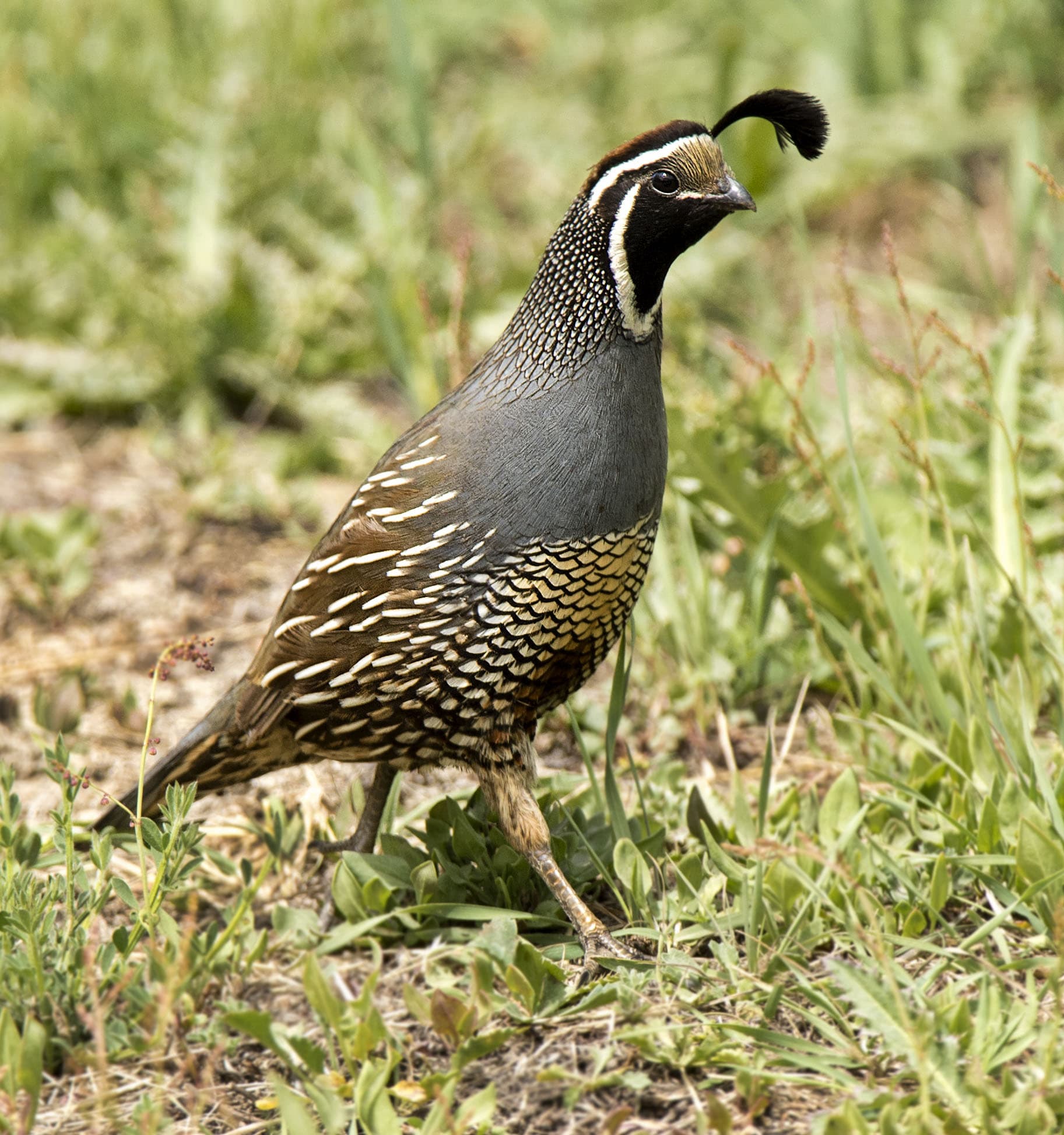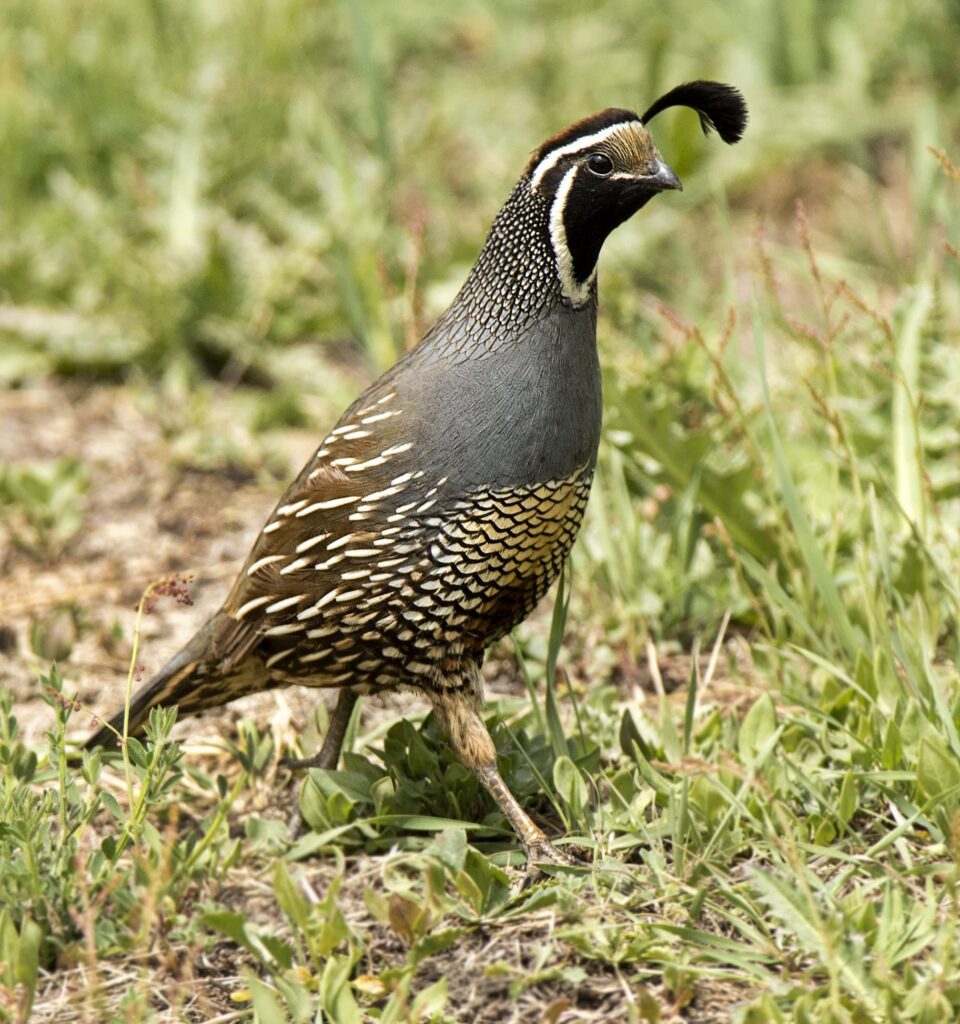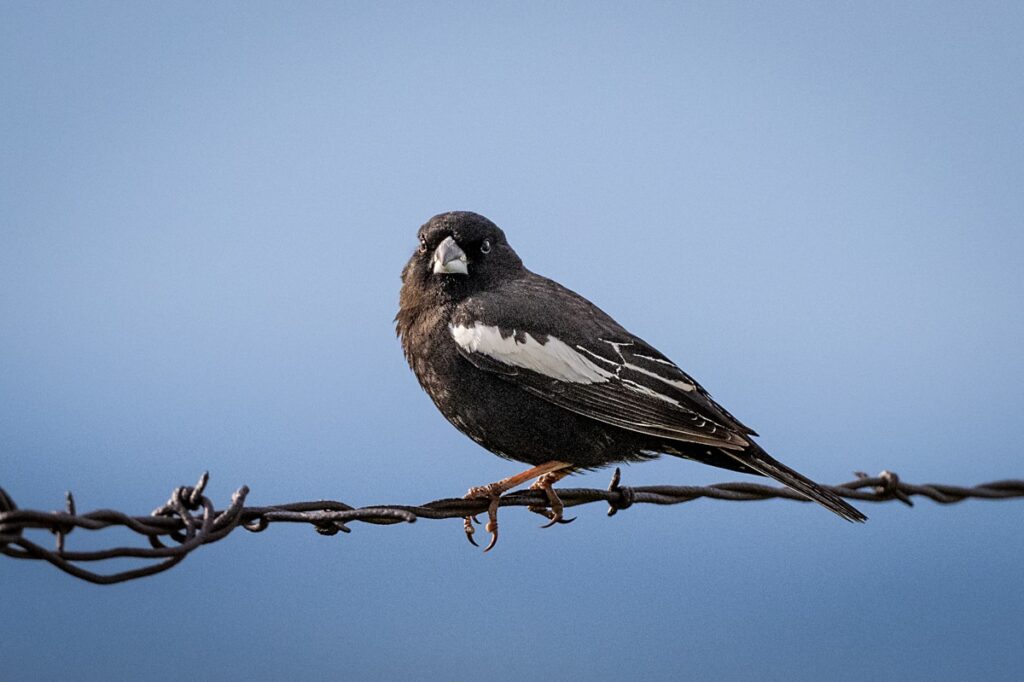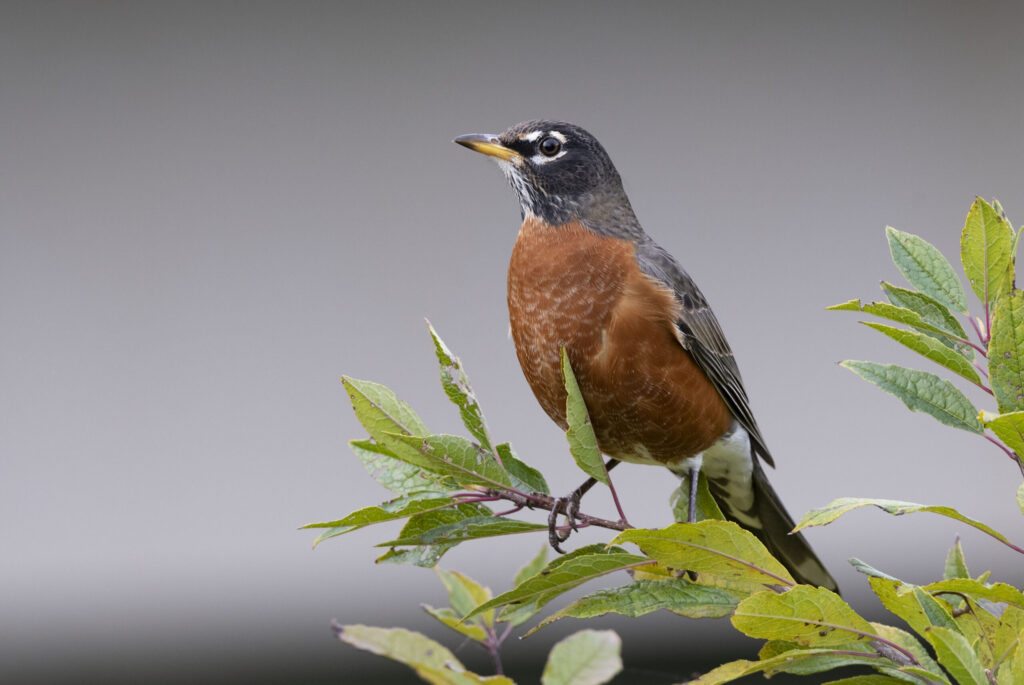
Across the United States, state birds represent not only the avian diversity of each region but also carry symbolic significance for the respective states. In today’s blog, we explore more state birds and shed some light on why these particular species were chosen and how they offer captivating insights into each bird and state.

CALIFORNIA: THE QUAIL
California Quails, also known as the California Valley or Valley Quails, have been proudly representing the Golden State since 1931 due to their abundance and widespread distribution throughout. Both sexes exhibit a plume of feathers, the male’s being a distinctive six-feathered comma-shaped plume and the female’s a comparatively stunted projection, this quail species was deemed a fitting representative of California’s rich natural heritage. The elegant chest plumage can resemble burnished gold leaf on males and white gold in females.
At home in a variety of habitats typical of California including coastal sagebrush, chaparral, foothills, and the high deserts, they also frequent backyards if there’s enough spilled seed to be found on the ground. Although mainly ground-dwelling birds, they do roost and sometimes forage in trees, can run surprisingly quickly despite those short legs, and will take to flight if necessary to avoid predators, bursting into rapid, whirring wingbeats.
Being highly social birds, they are often found in small flocks, or coveys, ranging from 10 to 200 individuals. These tight-knit groups provide that safety-in-numbers advantage and also mean there is greater success at foraging. Quails emit a variety of calls, including the easily recognizable and somewhat geographically confused “chi-ca-go”, which males. Unlike numerous states who share the same birds, California does not share the quail with any other state.

COLORADO: THE LARK BUNTING
Also designated in 1931, the Lark Bunting became the Centennial State’s bird, as this sleek, black-and-white songbird represents Colorado’s wild beauty of open prairies and majestic meadows of the Rocky Mountains. This bird’s common name is a mash-up of the beautiful song amid high-flying displays that the males produce during courtship, reminiscent of Eurasian skylarks, and the blunt conical bill that is characteristic of bunting species. Despite these associations, the bird is neither – it is in fact a member of the sparrow family.
Male lark buntings can be found across south-central Canada to northern New Mexico and Texas, where they sport striking black breeding plumage during the summer months, which sharply contrasts with their bold white wing patches. This combination has also given rise to other common names like white-winged blackbird and white-winged bunting. However, during the winter months when they head to the southern Great Plains and Chihuahuan grasslands of central Mexico, the two-tone plumage is shed to reveal streaky muted grays and earthy browns, but those white wing stripes can remain, sometimes becoming a pale yellow or brown.
Like California, Colorado wanted a bird all to itself and the Lark Bunting won out in a competition where the mountain bluebird and meadowlark also vied for attention, although half-heartedly at best – their representatives either spoke for a minute or so about their entries, but the lark bunting was represented by 121 senior students and their teacher from Fort Collins High, Roy Langdon, who delivered an impassioned 15-minute presentation all about this beautiful and bold bird.

CONNECTICUT: THE AMERICAN ROBIN
The proud and upright American Robin is the most abundant land-bird in North America, according to the 2019 Partners in Flight database with 370 million individuals, and also holds the honor of being the state bird of Connecticut, as well as Michigan and Wisconsin. Named after the European robin for its distinctive red breast, this bird is actually a member of the true thrush genus. Native American folklore claims the bird got its red breast after fanning the flames of a dying campfire to keep a father and his young boy alive during the cold desert night.
Revered for its vibrant appearance, delightful song, and seasonal symbolism, this thrush species has long captured the hearts of Connecticut residents. Connecticut adopted the American Robin as its state bird in 1943 due to its prevalence throughout the state and its association with the arrival of spring. The robin’s migratory patterns align with Connecticut’s changing seasons, making it a beloved harbinger of warmer days and renewed life.
Renowned for their characteristic behavior of tilting their heads to listen for earthworms in the soil, they also feast on a variety of fruits, including berries, cherries, and apples during the summer months. They represent the arrival of spring for many, as they are migratory (hence the second part of their scientific name, migratorius), and their melodious song brightens the longer days after the winter chills with their rich warbling notes.


